Ground&growth
Download as pptx, pdf0 likes278 views
Presentation at Helsinki Challenge PitchNight 3.9.2015
1 of 8
Download to read offline

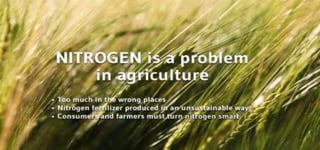
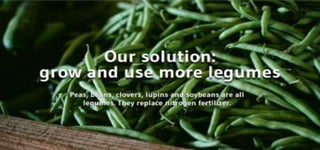
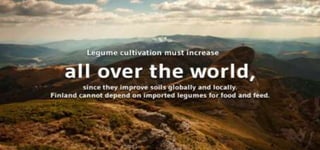
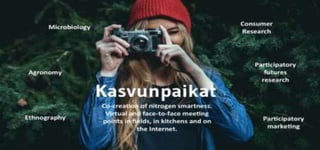
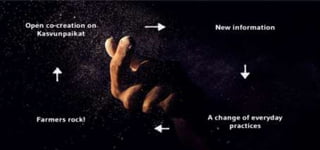

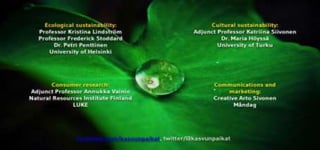
Ad
Recommended
Futurorg
FuturorgHelsinki Challenge by the University of Helsinki
?
Presentation at Helsinki Challenge PitchNight 3.9.2015 Sustainability Tracker
Sustainability TrackerHelsinki Challenge by the University of Helsinki
?
Presentation at Helsinki Challenge PitchNight 3.9.2015 Genetic correction
Genetic correctionHelsinki Challenge by the University of Helsinki
?
Over 300 million families worldwide are affected by inherited hemoglobin diseases but CRISPR gene editing offers a potential cure. The document outlines a treatment strategy using CRISPR to modify the hemoglobin gene in patients, allowing production of functional fetal hemoglobin and a cure. This approach has shown promise in genetically modifying cells to increase fetal hemoglobin levels by 100%, and the goal is to benefit millions through clinical trials and an approved therapy by 2035.Higher education unbounded
Higher education unboundedHelsinki Challenge by the University of Helsinki
?
Presentation at Helsinki Challenge PitchNight 3.9.2015 Safepreg
SafepregHelsinki Challenge by the University of Helsinki
?
Presentation at Helsinki Challenge PitchNight 3.9.2015 Generation green
Generation greenHelsinki Challenge by the University of Helsinki
?
Jenny McDowell from Monash University in Australia wants to include sustainability education in their course offerings going forward. She stated "I AM KEEN TO INCORPORATE SUSTAINABILITY EDUCATION IN OUR COURSES AS WE GO FORWARD." McDowell is looking to add sustainability topics to the university's curriculum.Urban Academy
Urban AcademyHelsinki Challenge by the University of Helsinki
?
Presentation at Helsinki Challenge PitchNight 3.9.2015 Helsinki sleep factory
Helsinki sleep factoryHelsinki Challenge by the University of Helsinki
?
Presentation at Helsinki Challenge PitchNight 3.9.2015 The Happiness Project
The Happiness ProjectHelsinki Challenge by the University of Helsinki
?
Presentation at Helsinki Challenge PitchNight 3.9.2015 Lab Impact Africa
Lab Impact AfricaHelsinki Challenge by the University of Helsinki
?
Presentation at Helsinki Challenge PitchNight 3.9.2015 Engaging working environments
Engaging working environmentsHelsinki Challenge by the University of Helsinki
?
Presentation at Helsinki Challenge PitchNight 3.9.2015 Play Learn Heal
Play Learn HealHelsinki Challenge by the University of Helsinki
?
Presentation at Helsinki Challenge PitchNight 3.9.2015 The Citizens Mindscapes
The Citizens MindscapesHelsinki Challenge by the University of Helsinki
?
Presentation at Helsinki Challenge PitchNight 3.9.2015 Moralities of Intelligent Machines
Moralities of Intelligent MachinesHelsinki Challenge by the University of Helsinki
?
Presentation at Helsinki Challenge PitchNight 3.9.2015 Tell Us
Tell UsHelsinki Challenge by the University of Helsinki
?
Presentation at Helsinki Challenge PitchNight 3.9.2015 Natural Emotionality in Digital Interaction
Natural Emotionality in Digital InteractionHelsinki Challenge by the University of Helsinki
?
Presentation at Helsinki Challenge PitchNight 3.9.2015 Viewfinder
ViewfinderHelsinki Challenge by the University of Helsinki
?
The document introduces Viewfinder, a new dialogue method and crowdsourced platform to facilitate interdisciplinary work between scientists and help the public better understand science. It provides contact information for the founders and outlines their goals of initially engaging scientists, then policy makers, and ultimately the broader public to help address the challenge that science can feel fragmented and difficult to understand for non-experts.Biodiversity now
Biodiversity nowHelsinki Challenge by the University of Helsinki
?
Presentation at Helsinki Challenge PitchNight 3.9.2015Climate whirl
Climate whirlHelsinki Challenge by the University of Helsinki
?
Presentation at Helsinki Challenge PitchNight 3.9.2015 Ulrich Weinberg: Impact Camp Presentation on Design Thinking.
Ulrich Weinberg: Impact Camp Presentation on Design Thinking. Helsinki Challenge by the University of Helsinki
?
The document outlines the Hasso Plattner Institute's School of Design Thinking, highlighting its founding, focus on innovation, and diverse student body comprising 120 students across 20 nationalities. It details the course structure, principles of design thinking, and examples of student projects aimed at addressing social challenges. Additionally, it mentions professional tracks for corporate training and collaborations in various fields such as health and logistics.Anatomy of Impact by Demos Helsinki
Anatomy of Impact by Demos HelsinkiHelsinki Challenge by the University of Helsinki
?
The document discusses the importance of impact in health and social programs, specifically focusing on the history of maternity and child care clinics in Finland and their success in reducing maternal and infant mortality rates. It highlights the role of health sisters and midwives in providing essential prenatal care, achieving near-total coverage of pregnant women by 2015. Additionally, it mentions the development of a new population projection model informed by ongoing research and collaboration with policymakers in various Asian regions.The Happiness Project
The Happiness ProjectHelsinki Challenge by the University of Helsinki
?
The document discusses happiness and how it relates to interaction with others. It argues that happiness is found through interaction rather than by pursuing it alone or viewing it as a possession. The challenge is developing linguistic awareness and concrete tools to change behavior and spread ideas about finding happiness in interaction. The project aims to participate in schools, workplaces and media to provide solutions.Demos helsinki Anatomy of Impact - What we do?
Demos helsinki Anatomy of Impact - What we do?Helsinki Challenge by the University of Helsinki
?
This document outlines the process and activities for a challenge to develop solutions that create impact. It involves defining problems, ideating concepts, testing feasibility, and delivering solutions through converging and diverging phases. Participants are guided to define target users, partners, and scope of impact. The process focuses on understanding needs, benefits, resources, and touchpoints through user research. It aims to develop solutions in collaboration with partners and users to maximize real-world impact.Generation Green
Generation GreenHelsinki Challenge by the University of Helsinki
?
The document discusses the need for reforming curricula to create a "Generation Green" with a strong environmental focus. It notes that the global population is projected to reach 9 billion by 2050, putting increasing pressure on limited resources like clean drinking water, which over 1.8 billion people currently lack access to. Individual actions alone will not lead to sustainable solutions, so curricula are needed to facilitate a comprehensive understanding of environmental resource management and ensure clean resources for all through scalable, sustainable practices. The document calls readers to join this effort to educate the next "Generation Green" and help address worldwide resource challenges.Helsinki Sleep Factory
Helsinki Sleep FactoryHelsinki Challenge by the University of Helsinki
?
The Helsinki Sleep Factory is a virtual sleep society that aims to help adolescents understand and improve their sleep through a combination of chronobiology, motivational psychology, medicine, and problem-based learning approaches. It provides personalized sleep resources and solutions through an intelligent sleep diary, relaxation and mindfulness exercises, and a social community for sharing sleep-related content. The goal is to create accessible and effective interventions for conditions like delayed sleep phase, which can cause learning problems and school absenteeism if not addressed.Biodiversity Now!
Biodiversity Now!Helsinki Challenge by the University of Helsinki
?
Biodiversity is being destroyed through many small incremental changes over time. This loss threatens our well-being and ability to adapt to climate change. To address this, the document proposes developing new mechanisms to neutralize negative impacts on biodiversity and turn losses into gains, such as through biodiversity offsets. Offsets involve compensating for biodiversity loss in one area by improving biodiversity elsewhere. This could create a market-based solution and new business opportunities, implementing the "polluter pays" principle. The proposal aims to incorporate offsets into legislation to balance development with conserving biodiversity in Finland.Ground and Growth
Ground and GrowthHelsinki Challenge by the University of Helsinki
?
Presentation at Helsinki Challenge Pitch Night Jan 29, 2015.Citizen Mindscapes
Citizen MindscapesHelsinki Challenge by the University of Helsinki
?
This document proposes creating a "Citizen Mindscapes" project to analyze social media data from Suomi24 discussions in order to:
1) Detect early signs of social conflicts and problems in Finland;
2) Work against national divisions and support diversity; and
3) Strengthen skills in social big data analysis for research and business.
The project would involve analyzing the tens of millions of texts on Suomi24, which is used by 80% of Finns, to understand sentiments, consumption styles, hate speech, behaviors, and rhythms of everyday life and the economy.Play Learn Heal
Play Learn HealHelsinki Challenge by the University of Helsinki
?
This document discusses a challenge to connect and empower children in hospitals. It proposes an approach called Play-Learn-Heal that uses co-creation and human-centered design methods to develop social, material and digital solutions. These solutions aim to empower children, reduce stress, connect them to family and learning, and expand support networks during their hospital care and recovery. An interdisciplinary team of children, healthcare professionals, educators, designers and technologists will work together to create and test prototypes to positively impact children, hospitals, research and society.Climate Whirl
Climate WhirlHelsinki Challenge by the University of Helsinki
?
This document discusses the need for a new approach to communicating information about climate change called "Climate Whirl". It notes that current information is fragmented across disciplines and sources, making it difficult for most people to understand climate change as a whole. Climate Whirl would be a science-based aggregator that combines climate and environmental information with health, social, and consumer insights using games, art, and citizen science to make climate change more understandable and relevant to everyday life. It would be developed by an interdisciplinary team with expertise in areas like environmental education, climate research, and public health.More Related Content
Viewers also liked (11)
The Happiness Project
The Happiness ProjectHelsinki Challenge by the University of Helsinki
?
Presentation at Helsinki Challenge PitchNight 3.9.2015 Lab Impact Africa
Lab Impact AfricaHelsinki Challenge by the University of Helsinki
?
Presentation at Helsinki Challenge PitchNight 3.9.2015 Engaging working environments
Engaging working environmentsHelsinki Challenge by the University of Helsinki
?
Presentation at Helsinki Challenge PitchNight 3.9.2015 Play Learn Heal
Play Learn HealHelsinki Challenge by the University of Helsinki
?
Presentation at Helsinki Challenge PitchNight 3.9.2015 The Citizens Mindscapes
The Citizens MindscapesHelsinki Challenge by the University of Helsinki
?
Presentation at Helsinki Challenge PitchNight 3.9.2015 Moralities of Intelligent Machines
Moralities of Intelligent MachinesHelsinki Challenge by the University of Helsinki
?
Presentation at Helsinki Challenge PitchNight 3.9.2015 Tell Us
Tell UsHelsinki Challenge by the University of Helsinki
?
Presentation at Helsinki Challenge PitchNight 3.9.2015 Natural Emotionality in Digital Interaction
Natural Emotionality in Digital InteractionHelsinki Challenge by the University of Helsinki
?
Presentation at Helsinki Challenge PitchNight 3.9.2015 Viewfinder
ViewfinderHelsinki Challenge by the University of Helsinki
?
The document introduces Viewfinder, a new dialogue method and crowdsourced platform to facilitate interdisciplinary work between scientists and help the public better understand science. It provides contact information for the founders and outlines their goals of initially engaging scientists, then policy makers, and ultimately the broader public to help address the challenge that science can feel fragmented and difficult to understand for non-experts.Biodiversity now
Biodiversity nowHelsinki Challenge by the University of Helsinki
?
Presentation at Helsinki Challenge PitchNight 3.9.2015Climate whirl
Climate whirlHelsinki Challenge by the University of Helsinki
?
Presentation at Helsinki Challenge PitchNight 3.9.2015 More from Helsinki Challenge by the University of Helsinki (11)
Ulrich Weinberg: Impact Camp Presentation on Design Thinking.
Ulrich Weinberg: Impact Camp Presentation on Design Thinking. Helsinki Challenge by the University of Helsinki
?
The document outlines the Hasso Plattner Institute's School of Design Thinking, highlighting its founding, focus on innovation, and diverse student body comprising 120 students across 20 nationalities. It details the course structure, principles of design thinking, and examples of student projects aimed at addressing social challenges. Additionally, it mentions professional tracks for corporate training and collaborations in various fields such as health and logistics.Anatomy of Impact by Demos Helsinki
Anatomy of Impact by Demos HelsinkiHelsinki Challenge by the University of Helsinki
?
The document discusses the importance of impact in health and social programs, specifically focusing on the history of maternity and child care clinics in Finland and their success in reducing maternal and infant mortality rates. It highlights the role of health sisters and midwives in providing essential prenatal care, achieving near-total coverage of pregnant women by 2015. Additionally, it mentions the development of a new population projection model informed by ongoing research and collaboration with policymakers in various Asian regions.The Happiness Project
The Happiness ProjectHelsinki Challenge by the University of Helsinki
?
The document discusses happiness and how it relates to interaction with others. It argues that happiness is found through interaction rather than by pursuing it alone or viewing it as a possession. The challenge is developing linguistic awareness and concrete tools to change behavior and spread ideas about finding happiness in interaction. The project aims to participate in schools, workplaces and media to provide solutions.Demos helsinki Anatomy of Impact - What we do?
Demos helsinki Anatomy of Impact - What we do?Helsinki Challenge by the University of Helsinki
?
This document outlines the process and activities for a challenge to develop solutions that create impact. It involves defining problems, ideating concepts, testing feasibility, and delivering solutions through converging and diverging phases. Participants are guided to define target users, partners, and scope of impact. The process focuses on understanding needs, benefits, resources, and touchpoints through user research. It aims to develop solutions in collaboration with partners and users to maximize real-world impact.Generation Green
Generation GreenHelsinki Challenge by the University of Helsinki
?
The document discusses the need for reforming curricula to create a "Generation Green" with a strong environmental focus. It notes that the global population is projected to reach 9 billion by 2050, putting increasing pressure on limited resources like clean drinking water, which over 1.8 billion people currently lack access to. Individual actions alone will not lead to sustainable solutions, so curricula are needed to facilitate a comprehensive understanding of environmental resource management and ensure clean resources for all through scalable, sustainable practices. The document calls readers to join this effort to educate the next "Generation Green" and help address worldwide resource challenges.Helsinki Sleep Factory
Helsinki Sleep FactoryHelsinki Challenge by the University of Helsinki
?
The Helsinki Sleep Factory is a virtual sleep society that aims to help adolescents understand and improve their sleep through a combination of chronobiology, motivational psychology, medicine, and problem-based learning approaches. It provides personalized sleep resources and solutions through an intelligent sleep diary, relaxation and mindfulness exercises, and a social community for sharing sleep-related content. The goal is to create accessible and effective interventions for conditions like delayed sleep phase, which can cause learning problems and school absenteeism if not addressed.Biodiversity Now!
Biodiversity Now!Helsinki Challenge by the University of Helsinki
?
Biodiversity is being destroyed through many small incremental changes over time. This loss threatens our well-being and ability to adapt to climate change. To address this, the document proposes developing new mechanisms to neutralize negative impacts on biodiversity and turn losses into gains, such as through biodiversity offsets. Offsets involve compensating for biodiversity loss in one area by improving biodiversity elsewhere. This could create a market-based solution and new business opportunities, implementing the "polluter pays" principle. The proposal aims to incorporate offsets into legislation to balance development with conserving biodiversity in Finland.Ground and Growth
Ground and GrowthHelsinki Challenge by the University of Helsinki
?
Presentation at Helsinki Challenge Pitch Night Jan 29, 2015.Citizen Mindscapes
Citizen MindscapesHelsinki Challenge by the University of Helsinki
?
This document proposes creating a "Citizen Mindscapes" project to analyze social media data from Suomi24 discussions in order to:
1) Detect early signs of social conflicts and problems in Finland;
2) Work against national divisions and support diversity; and
3) Strengthen skills in social big data analysis for research and business.
The project would involve analyzing the tens of millions of texts on Suomi24, which is used by 80% of Finns, to understand sentiments, consumption styles, hate speech, behaviors, and rhythms of everyday life and the economy.Play Learn Heal
Play Learn HealHelsinki Challenge by the University of Helsinki
?
This document discusses a challenge to connect and empower children in hospitals. It proposes an approach called Play-Learn-Heal that uses co-creation and human-centered design methods to develop social, material and digital solutions. These solutions aim to empower children, reduce stress, connect them to family and learning, and expand support networks during their hospital care and recovery. An interdisciplinary team of children, healthcare professionals, educators, designers and technologists will work together to create and test prototypes to positively impact children, hospitals, research and society.Climate Whirl
Climate WhirlHelsinki Challenge by the University of Helsinki
?
This document discusses the need for a new approach to communicating information about climate change called "Climate Whirl". It notes that current information is fragmented across disciplines and sources, making it difficult for most people to understand climate change as a whole. Climate Whirl would be a science-based aggregator that combines climate and environmental information with health, social, and consumer insights using games, art, and citizen science to make climate change more understandable and relevant to everyday life. It would be developed by an interdisciplinary team with expertise in areas like environmental education, climate research, and public health.Ulrich Weinberg: Impact Camp Presentation on Design Thinking.
Ulrich Weinberg: Impact Camp Presentation on Design Thinking. Helsinki Challenge by the University of Helsinki
?
Ad
Recently uploaded (20)
Internet Download Manager (IDM) Crack Free Download 2025
Internet Download Manager (IDM) Crack Free Download 2025Designer
?
Copy Link & Paste in Google:??? http://alipc.pro/dl
Internet Download Manager increases download speed with built-in download logic accelerator, resume and schedule downloads.Transformative Storytelling_ Insights from the Sankofa Writing Intensive.pdf
Transformative Storytelling_ Insights from the Sankofa Writing Intensive.pdfDr. Rema
?
The intensive is structured around workshops and individual writing sessions to facilitate deep reflection and discovery. Participants engage with various genres, from memoirs to reflective essays, each chosen to amplify the introspective process.FLOURISHING THROUGH SENSES: FROM Ab°ÆSENSE°Ø to Pre°ÆSENSE°Ø to Es°ÆSENSE°Ø to Re-...
FLOURISHING THROUGH SENSES: FROM Ab°ÆSENSE°Ø to Pre°ÆSENSE°Ø to Es°ÆSENSE°Ø to Re-...Samuel Thuo
?
A presentation By Samuel Thuo, The Senses Architect to FxD Community for a PechaKucha Format titled: Flourishing Through Senses: From Ab°Æsense°Ø to Pre°Æsense°Ø to Es°Æsense°Ø to Re-sensing the World
In a world where skyscrapers rise and senses fall, this presentation explores how architecture can either numb or nourish our humanity.
? Act I ®C Ab°Æsense°Ø: The Crisis of Sensory Deprivation
We begin in the concrete jungle, a habitat built for function, but not for feeling. Glass, steel, white walls. Children indoors, glued to screens. Cities that silence rain and sterilize smell. We've lost touch with the sensory essence of living. We're living in a pandemic of nonsense environments.
? Act II ®C Pre°Æsense°Ø: The Power of Sensory Grounding
We rediscover presence in barefoot steps on soil, bark under fingertips, beams of sunlight through timber, whispers of wind and scent of wet earth. Flourishing starts when all senses are awake, not just sight. It°Øs a return to how we once knew the world, intimately, bodily.
? Act III ®C Es°Æsense°Ø: Remembering Our Sensory Nature
Flourishing is rooted in our essence, as sensing, emotional beings. We learn from nature°Øs flow, from indigenous African architecture, from animals in tune with their environment, and even from cooking. These are acts of multisensory design, where wisdom is embodied, not abstract. Beauty is not in the eyes of the beholder, but all the senses of the beholder.
? Act IV ®C Re-sensing: A Vision for the Future
It°Øs time to re-sense the world. Pallasmaa said that architecture is the art of reconciliation between ourselves and the world, and this mediation happens through the senses. We must go back to creating senseful environments that allow this dialogue between us and the world. Homes like Falling water that merge with land. Playful spaces for children. Healing cities filled with texture, sound, and smell. Bodies that root into nature. We must shift from building cold structures to designing sensescapes that foster wellbeing.Aimee White Visual Thinking, Graphic Design, Livermore
Aimee White Visual Thinking, Graphic Design, Livermoreaimeewhite13
?
Why Hire a professional Graphic Designer? Learn what makes great design and what it can do for your business.
Unified: Consistency brings trust, recognition, and recall.
If all your work can be recognized by the viewer as coming from you, they will more easily recognize you, gain a sense of trust in your business, and remember you and your message better.
Organized: Well designed content is clean and easy to take in. You want the audience to be able to quickly get your message
and have their eye drawn to elements in the order you choose by placement and scale.
White space is a good thing. It gives the eye room to rest
between elements and see your message as a whole.
Meaningful: Define your goals, your audience, and what critical information they need to know in order to act.
Genuine: Tell your story and engage your audience to
make them care about that information. The emotional
connection or human component is a powerful
compliment to analytical content.
Concept: With clear insight into your intent and your target audience°Øs needs and issues, design to solve the problems and bring clarity with a solution that°Øs valuable to the viewer.
Aimee White, Visual Thinking
for Design that Connects.Quectel M10 AT commands Arduino Microcontroller
Quectel M10 AT commands Arduino MicrocontrollerAdamSunusiHaruna1
?
Quectel M10 AT commands Arduino Microcontroller Marketplaces to Buy and Sell Social Media Accounts.pdf
Marketplaces to Buy and Sell Social Media Accounts.pdfjamedthomsn
?
In the bustling world of social media marketing, having a solid Facebook presence can make all the difference. But who has time to build accounts from scratch? Enter SellsUSA, a popular platform known for offering verified, ready-to-use Facebook accounts. Whether you're a marketer, small business owner, or social media manager, buying Facebook accounts from a trusted site like SellsUSA can turbocharge your growth journey. But is it really the best option out there? Let°Øs dig deep into everything you need to know before making that purchase. Chromatic house a case study presentation arch.pptx
Chromatic house a case study presentation arch.pptxmaheshwarigarvit2006
?
a case study on chrmatic house chandigarh indiaSyrian politician opposition Randa Kassis
Syrian politician opposition Randa Kassismo820325
?
Syrian politician opposition
Randa Kassis is a Franco-Syrian politician and a prominent secular figure within the Syrian opposition. Born on October 8, 1970, in Damascus, Syria, she is also an anthropologist and has worked as a commentator on cultural, political, and societal topics.
◊Ó–¬∞Ê√¿π˙Õ˛Àπøµ–«¥Û—ß∆’¿≠ÃÿŒ¨∂˚∑÷–£±œ“µ÷§£®±´∞¬± ±œ“µ÷§ È£©‘≠∞Ê∂®÷∆
◊Ó–¬∞Ê√¿π˙Õ˛Àπøµ–«¥Û—ß∆’¿≠ÃÿŒ¨∂˚∑÷–£±œ“µ÷§£®±´∞¬± ±œ“µ÷§ È£©‘≠∞Ê∂®÷∆taqyea
?
2025‘≠∞ÊÕ˛Àπøµ–«¥Û—ß∆’¿≠ÃÿŒ¨∂˚∑÷–£±œ“µ÷§ ÈpdfµÁ◊”∞Ê°æqfi±1954292140°ø√¿π˙±œ“µ÷§∞Ï¿ÌUWPÕ˛Àπøµ–«¥Û—ß∆’¿≠ÃÿŒ¨∂˚∑÷–£±œ“µ÷§ È∂‡…Ÿ«Æ£ø°æqfi±1954292140°ø∫£Õ‚∏˜¥Û—ßDiploma∞ʱ棨“ÚŒ™“fl«È—ß–£Õ∆≥Ÿ∑¢∑≈÷§ È°¢÷§ È‘≠º˛∂™ ß≤π∞Ï°¢√ª”–’˝≥£±œ“µŒ¥ƒ‹»œ÷§—ß¿˙√Ê¡ŸæÕ“µÃ·π©Ω‚æˆ∞Ï∑®°£µ±‘‚”ˆπ“ø∆°¢øıøŒµº÷¬Œfi∑®–fi¬˙—ß∑÷£¨ªÚ’fl÷±Ω”±ª—ß–£ÕÀ—ߣ¨◊Ó∫ÛŒfi∑®±œ“µƒ√≤ªµΩ±œ“µ÷§°£¥À ±µƒƒ„“ª∂® ÷◊„Œfi¥Î£¨“ÚŒ™¡Ù—ß“ª≥°£¨√ª”–ªÒµ√±œ“µ÷§“‘º∞—ß¿˙÷§√˜øœ∂® «Œfi∑®∏¯◊‘º∫∫Õ∏∏ƒ∏“ª∏ˆΩª¥˙µƒ°£
°æ∏¥øÃÕ˛Àπøµ–«¥Û—ß∆’¿≠ÃÿŒ¨∂˚∑÷–£≥…º®µ•–≈∑‚,Buy University of Wisconsin-Platteville Transcripts°ø
π∫¬Ú»’∫´≥…º®µ•°¢”¢π˙¥Û—ß≥…º®µ•°¢√¿π˙¥Û—ß≥…º®µ•°¢∞ƒ÷fi¥Û—ß≥…º®µ•°¢º”ƒ√¥Û¥Û—ß≥…º®µ•£®qŒ¢1954292140£©–¬º”∆¬¥Û—ß≥…º®µ•°¢–¬Œ˜¿º¥Û—ß≥…º®µ•°¢∞Æ∂˚¿º≥…º®µ•°¢Œ˜∞‡—¿≥…º®µ•°¢µ¬π˙≥…º®µ•°£≥…º®µ•µƒ“‚“Â÷˜“™ÃÂœ÷‘⁄÷§√˜—ßœ∞ƒ‹¡¶°¢∆¿π¿—ß ı±≥æ∞°¢’π æ◊€∫œÀÿ÷ °¢Ã·∏fl¬º»°¬ £¨“‘º∞ «◊˜Œ™¡Ù–≈»œ÷§…Í«Î≤ƒ¡œµƒ“ª≤ø∑÷°£
Õ˛Àπøµ–«¥Û—ß∆’¿≠ÃÿŒ¨∂˚∑÷–£≥…º®µ•ƒ‹πªÃÂœ÷ƒ˙µƒµƒ—ßœ∞ƒ‹¡¶£¨∞¸¿®Õ˛Àπøµ–«¥Û—ß∆’¿≠ÃÿŒ¨∂˚∑÷–£øŒ≥Ã≥…º®°¢◊®“µƒ‹¡¶°¢—–æøƒ‹¡¶°££®qŒ¢1954292140£©æflÿ¥Àµ£¨≥…º®±®∏ʵ•Õ®≥£∞¸∫¨—ß…˙µƒ—ßœ∞ººƒ‹”Îœ∞πfl°¢∏˜ø∆≥…º®“‘º∞¿œ ¶∆¿”Ôµ»≤ø∑÷£¨“Ú¥À£¨≥…º®µ•≤ªΩˆ «—ß…˙—ß ıƒ‹¡¶µƒ÷§√˜£¨“≤ «∆¿π¿—ß…˙ «∑Ò ∫œƒ≥∏ˆΩÔ˝œÓƒøµƒ÷ÿ“™“¿æ›£°
Œ“√«≥–≈µ≤…”√µƒ «—ß–£‘≠∞Ê÷Ω’≈£®‘≠∞Ê÷Ω÷ °¢µ◊…´°¢Œ∆¬∑£©Œ“√«π§≥ß”µ”–»´Ã◊Ω¯ø⁄‘≠◊∞…˱∏£¨Ãÿ ‚𧓒∂º «≤…”√≤ªÕ¨ª˙∆˜÷∆◊˜£¨∑¬’Ê∂»ª˘±æø…“‘¥ÔµΩ100%£¨À˘”–≥…∆∑“‘º∞𧓒–ßπ˚∂ºø…÷«∞∏¯øժߒπ 棨≤ª¬˙“‚ø…“‘∏˘æ›øժߓ™«ÛΩ¯––µ˜’˚£¨÷±µΩ¬˙“‚Œ™÷π£°
°æ÷˜”™œÓƒø°ø
“ª°¢π§◊˜Œ¥»∑∂®£¨ªÿπ˙–Ëœ»∏¯∏∏ƒ∏°¢«◊∆›≈Û”—ø¥œ¬Œƒ∆浃«Èøˆ£¨∞Ͽ̱œ“µ÷§|∞Ï¿ÌŒƒ∆æ: ¬Ú¥Û—ß±œ“µ÷§|¬Ú¥Û—ߌƒ∆æ°æqfi±1954292140°øÕ˛Àπøµ–«¥Û—ß∆’¿≠ÃÿŒ¨∂˚∑÷–£—ߌª÷§√˜ È»Á∫Œ∞Ͽ̅ͫΣø
∂˛°¢ªÿπ˙Ω¯ÀΩ∆Û°¢Õ‚∆Û°¢◊‘º∫◊ˆ…˙“‚µƒ«Èøˆ£¨’‚–©µ•Œª «≤ª≤ȗرœ“µ÷§’ÊŒ±µƒ£¨∂¯«“π˙ƒ⁄√ª”–«˛µ¿»•≤È—Øπ˙Õ‚Œƒ∆浃’ʺŸ£¨“≤≤ª–Ë“™Ã·π©’Ê µΩÔ˝≤ø»œ÷§°£º¯”⁄¥À£¨∞Ï¿Ì√¿π˙≥…º®µ•Õ˛Àπøµ–«¥Û—ß∆’¿≠ÃÿŒ¨∂˚∑÷–£±œ“µ÷§°æqfi±1954292140°øπ˙Õ‚¥Û—ß±œ“µ÷§, Œƒ∆æ∞Ï¿Ì, π˙Õ‚Œƒ∆æ∞Ï¿Ì, ¡Ù–≈Õ¯»œ÷§Nueva presentaci®Æn para diapositivas de power point.pdf
Nueva presentaci®Æn para diapositivas de power point.pdfSubaruKun1
?
Presenta plantillas para powerpoint Ad
